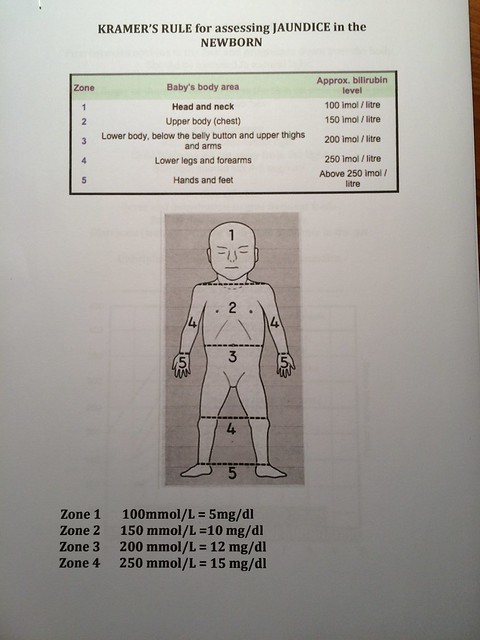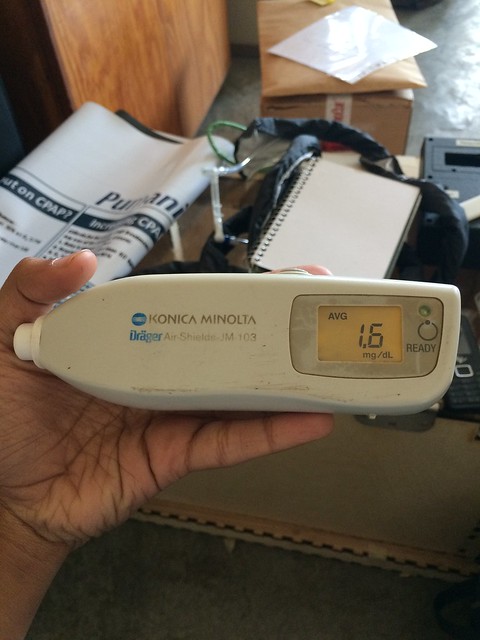Jaundice is something that affects a lot of the babies born in Queens. Especially in preterm babies, the levels of bilirubin (the pigment that causes the trademark yellow tint of jaundice), are usually a little elevated. Generally, these babies do not need treatment since they will naturally adjust back to normal levels. However, in babies with severe jaundice, the threat of brain damage necessitates treatment with phototherapy lights, which break down bilirubin.
In the past few weeks, Karen and I have gotten a chance to work a lot more closely with the nurses and babies in Chatinkha Nursery on a project involving jaundice. The Poly Interns recently helped fix a broken bilirubinometer (a diagnostic machine that shows the bilirubin levels in the blood). Our first project was to test it’s accuracy against the working Chatinkha bilimeter. The second part of our project involved the diagnosis of jaundice through visual assessment. Chatinkha has a working bilimeter that gives nurses an accurate readout of how severely jaundiced a baby is. In the district hospitals, however, bilimeters are often unavailable. This is why some doctors at Queens are trying to teach nurses about Kramer Scores. The Kramer Score is an old technique to estimate the severity of jaundice by looking at how far down the body the line of jaundice has progressed:

By palpating the skin on the forehead, nose, arms, legs, and chest, the nurse will be able to tell which areas of the baby are affected. Using the chart above, they can then estimate bilirubin levels. We worked with nurses these past few weeks in order to get them to estimate the bilirubin levels of babies without any Kramer Score training. What we found was that nurses were fairly good at telling which babies had jaundice. However, when it came to assessing the severity of the jaundice, they had problems. It is very possible that Kramer Score training will help nurses make better diagnoses when they do not have access to a bilimeter.

Though there is definitely a need for cheaper and better technologies (ex. bilimeter, phototherapy lights), this example also proves that training and education can be an important first step to bridging gaps in healthcare provision. Though neither technology nor education is a magic bullet that will work overnight, in combination they can be very effective. Teaching nurses about how to identify jaundice without technology creates a sustainable way for them to be able to assess patients even if they lack access to technology. Meanwhile, building low-cost technlologies addresses longer-term issues of improving healthcare capabilities and infrastructure even in low-resource settings.